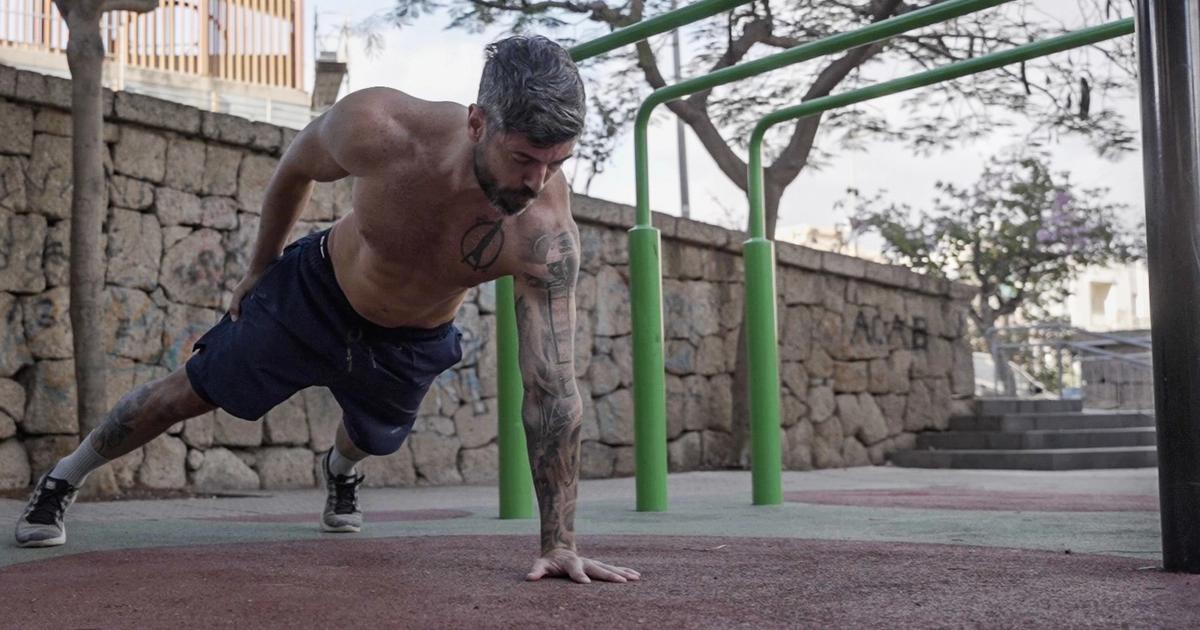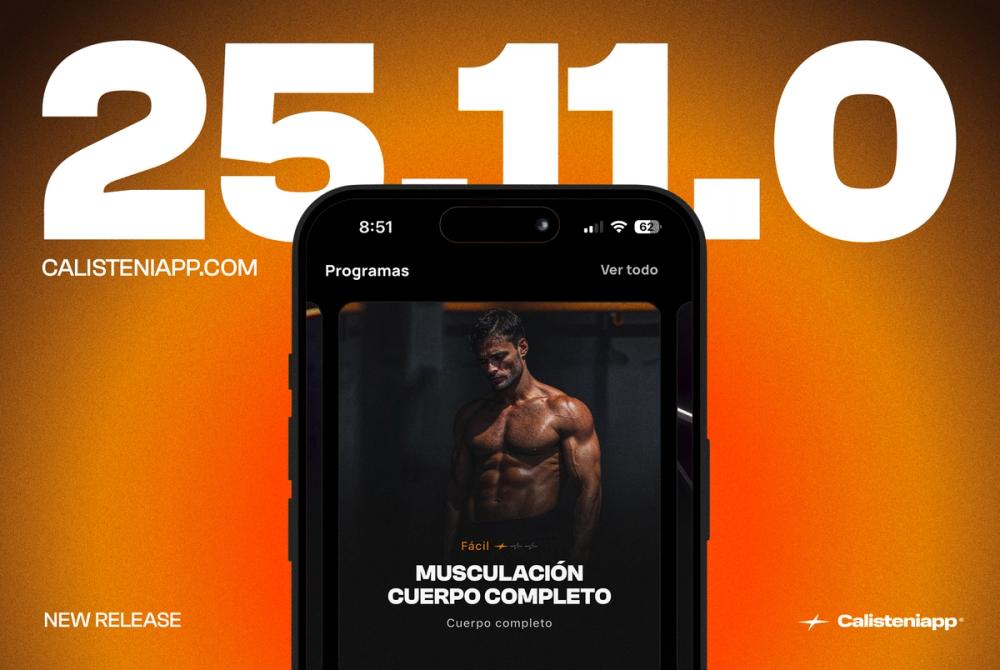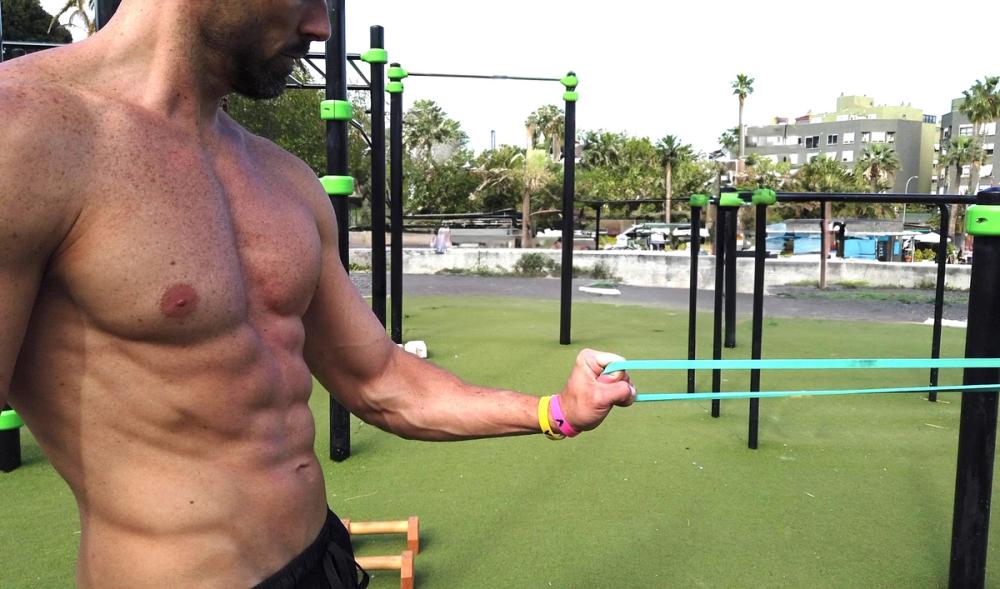
Calisteniapp 10' Workout Challenge
Start training or give your routines a boost with this 21-day Calisthenics challenge for all levels that will put your discipline to the test.

The one-hand push-up is an advanced movement that requires a lot of strength in the pectoral and triceps, with some collaboration from the anterior deltoid. In addition, it requires good propioception to position yourself and control the movement and prior adaptation work to prevent injuries in your wrist, elbow or shoulder.
To begin, we are going to analyze the technique of this movement. From my point of view, the key is to find an adequate leg spread distance, since it is what makes the execution easier.
By only having 3 support points, you must form a well-positioned triangle that has good stability so that you don't lose your balance. There are people who are able to do it with their legs closer together and there are people who need to do it with their legs spread really far.

From my point of view this is not a big problem, although it is true that visually they seem stricter when you do them with the legs closer together. Start doing them with a leg distance that is comfortable for you and then over time you can manage to close them more if that is what you want.
It is important to highlight that above all you will notice that most of the weight and effort falls, obviously, on the arm you are using and on the opposite leg.
Regarding the free hand, I think it is comfortable and aesthetic to place it on the back of the thigh, although you can really put it wherever you want.
Finally, as always, the ideal is to achieve a full range of motion, exceeding 90º in arm flexion and locking the elbow at the top.
To start working on the one-handed push-up, I recommend that you be able to do at least 20 full-range push-ups with ease and without being close to your muscle failure.
From there you can start working with progressions that emphasize movement unilaterally. Let's see what the main progressions would be:
Asymmetrical push-ups. Letting the weight fall mostly on one of the arms at a time.

Archer push-ups, don't worry if at first they don't come out perfect and you flex your elbow a little, work on them patiently and improve your technique over time.

Inclined one arm push ups, using heights to facilitate movement. We can start with a height that reaches approximately our waist, when you feel strong at that height and you have gotten used to it you can move to approximately the height of your knee. Then at a height of one step, and when you have worked and strengthened those progressions you will be ready to start doing it directly on the ground.



I leave you a routine designed specifically to work on these progressions, which you can do in Calisteniapp
I hope it helps you a lot.
Yerai Alonso

Yerai Alonso
Cofundador de Calisteniapp, referente en calistenia y el street workout en Español. Con más de una década de experiencia, es creador de uno de los canales de YouTube más influyentes del sector. Autor del libro La calle es tu gimnasio, campeón de Canarias y jurado en competiciones nacionales e internacionales.
Join our newsletter
Learn everything you need to know about calisthenics

Start training or give your routines a boost with this 21-day Calisthenics challenge for all levels that will put your discipline to the test.

Calisteniapp is a symbol that represents our obsession with excellence, our essence, and the path we want to define for the next ten years.

Descubre los mejores ejercicios de antebrazo para calistenia. Mejora fuerza, agarre y control corporal con entrenamientos efectivos sin pesas.
